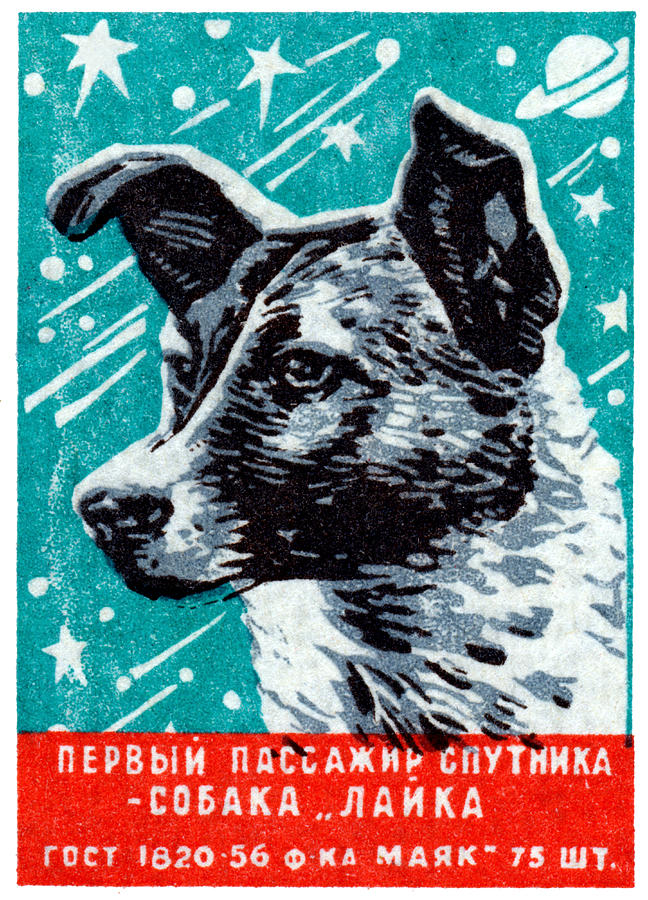
THE LAUNCH OF SPUTNIK 2 AND DEMISE OF OUR FIRST SPACE DOG The dogs did not like the devices, and to avoid using them, some retained bodily waste, even after consuming laxatives. Testers fitted candidates with a sanitation device connected to the pelvic area. The doctors also checked their reactions to changes in air pressure and to loud noises that would accompany liftoff. Laika was spun in a centrifuge to accustom her to changes in gravitation, and she learned to accept food in a jellied form that could be easily served in an environment of weightlessness. They trained for life on board the satellite by learning to accept progressively smaller living spaces. They were the three dogs who were trained for space travel by being kept in small cages and learning to eat a nutritious gel that would be their food in space.

The third dog, Mushka, was a “control dog” - she was to stay on the ground and be used to test instrumentation and life support. Albina, who had already flown twice on a high-altitude test rocket, was to act as Laika’s backup. Laika was to be the “flight dog” - a sacrifice to science on a one-way mission to space. Finally, Vladimir Yazdovsky made the final selection of dogs and their designated roles. There was a wide search for dogs and they had a couple to choose from. Soviet scientists assumed that a stray dog would be the perfect test subject because they would have already learned to endure harsh conditions of hunger and cold temperatures. (The name Laika is derived from the Russian-language word for “bark.”) She was rescued from the streets of Moscow. They formed in 1987.Laika was young, a two-year-old husky mix. Laika & the Cosmonauts, a Finnish surf rock band, were named for Laika. She also appears on the Monument to the Conquerors of Space in Moscow. It is of a dog standing on top of a rocket. It was built near the military research facility in Moscow which prepared Laika's space flight. On April 11, 2008, Russian officials opened a monument to Laika. Over five months later, after 2,570 orbits, Sputnik 2 burned up-along with Laika's remains-during re-entry on April 14, 1958. We did not learn enough from this mission to justify the death of the dog. The more time passes, the more I'm sorry about it. We treat them like babies who cannot speak. Work with animals is a source of suffering to all of us. It was not until 1998, after the collapse of the Soviet Union, that Oleg Gazenko, one of the top-level scientists responsible for sending Laika into space, said he was sorry for allowing her to die: In the Soviet Union, during the following years, no one openly questioned the decision to send a dog into space. Another untruth, as the Soviet government first said, was that she was euthanised (put to sleep) before her oxygen ran out.

Instead, it was reported that she died when her oxygen ran out on day six. The true cause and time of her death were hidden from people until 2002. The heat in her spacecraft had quickly risen to 40 degrees Celsius (104 degrees Fahrenheit). Her body temperature got way too hot for her to survive. Laika died within hours from overheating. One of the technicians getting the capsule ready before final lift-off said that "after placing Laika in the container and before closing the hatch, we kissed her nose and wished her bon voyage, knowing that she would not survive the flight." Death in space Vladimir Yazdovsky wrote: "Laika was quiet and charming.I wanted to do something nice for her: She had so little time left to live."


Before her trip in Sputnik, one of the scientists took Laika home to play with his children.


 0 kommentar(er)
0 kommentar(er)
